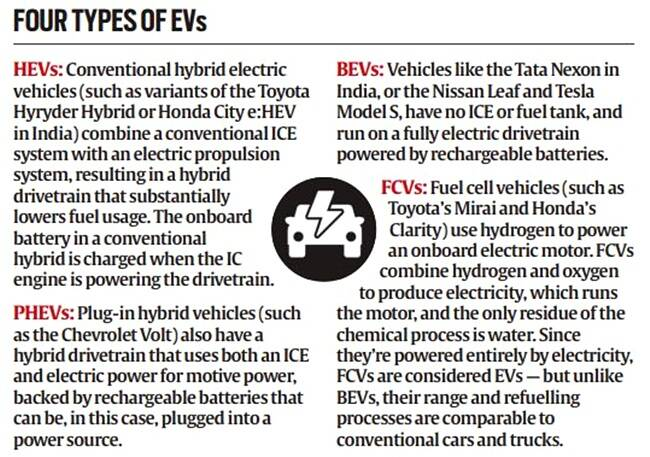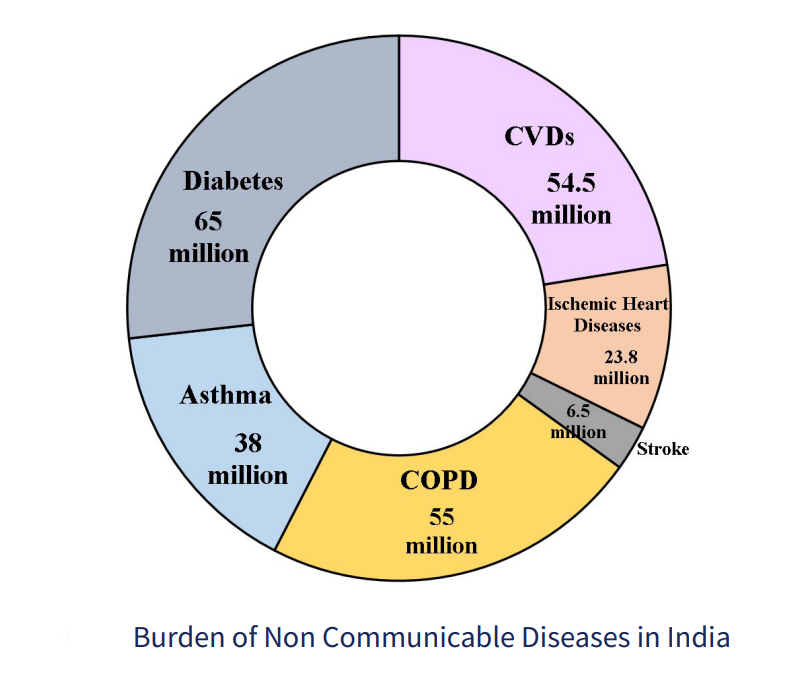Science & Technology
Battery Electric Vehicles in India
For Prelims: Battery Electric Vehicles, Ethanol, Flex Fuel, FAME-II, NEMMP
For Mains: Electric Vehicles Manufacturing and Adoption - challenges and opportunities, EVs and Global Goals of Net Zero Emission.
Why in News?
As India strives to achieve its net-zero emissions target, battery electric vehicles (BEVs) have emerged as a centerpiece of the government's push for sustainable mobility.
- However, while countries like Norway and China have seen success with BEVs, India faces unique challenges due to its specific conditions.
What are Battery Electric Vehicles?
- About:
- Battery Electric Vehicles (BEVs) are a type of electric vehicle that runs solely on electric power stored in high-capacity batteries.
- They do not have an internal combustion engine (ICE) and produce zero tailpipe emissions.
- BEVs use electric motors to drive the wheels, providing instant torque and smooth acceleration.
- Battery Technology:
- BEVs rely on advanced battery technology, primarily Lithium-ion (Li-ion) batteries.
- Li-ion batteries offer high energy density, longer range, and improved performance.
- Charging Infrastructure:
- BEVs require a network of charging stations for recharging their batteries. Charging infrastructure includes various types of chargers:
- Level 1 (household outlets)
- Level 2 (dedicated charging stations)
- Level 3 (DC fast chargers).
- Public charging stations, workplaces, and residential buildings play a crucial role in expanding the charging infrastructure.
- BEVs require a network of charging stations for recharging their batteries. Charging infrastructure includes various types of chargers:
What are the Problems with Battery Electric Vehicles?
- Charging Network:
- Currently, India has a limited number of public charging stations, requiring a tailored strategy that accommodates the dominant presence of two- and three-wheelers.
- Only about 2,000 public charging stations are currently operational across the country.
- There exists a lack of standardization and interoperability among chargers and vehicles.
- Currently, India has a limited number of public charging stations, requiring a tailored strategy that accommodates the dominant presence of two- and three-wheelers.
- Electricity Source:
- The majority of India's electricity is still generated from coal-fired thermal plants, impacting the environmental benefits of EVs.
- Unless the power generation mix changes significantly, India would be using fossil fuel generation to power EVs.
- Value Chain Dependency:
- The demand for Li-ion batteries from India is projected to grow at a CAGR of ~30% by volume up to 2030; more than 50,000 tonnes of lithium requirement for the country to manufacture EV batteries alone.
- However, more than 90% of the global Li production is concentrated in Chile, Argentina, and Bolivia (and Australia and China) and other key inputs such as cobalt and nickel are mined in the Congo and Indonesia. As a result, India would be almost entirely dependent on imports from a small pool of countries to cater to its demand.
- The demand for Li-ion batteries from India is projected to grow at a CAGR of ~30% by volume up to 2030; more than 50,000 tonnes of lithium requirement for the country to manufacture EV batteries alone.
- High Initial Cost of Owning an Electric Vehicle:
- EVs remain expensive compared to Internal Combustion Engine (ICE) vehicles. Costly batteries contribute to the overall high price.
- Limited availability and affordability of EV models in the mass market segment makes the transition to EVs even more difficult.
- Lack of Awareness and Consumer Preference:
- Consumer preference for ICE vehicles based on brand loyalty, resale value, and comfort and limited knowledge of potential buyers regarding EV benefits and features further adds to the problem.
- Cultural factors also influence social acceptance and perception of EVs.
- Other Challenges:
- Shortage of skilled workers and technicians for EV servicing and repair.
- Increasing electricity demand and grid stability concerns.
- Surge in 2 and 3-wheeler EVs but same can't be said for 4-wheeler EVs.
What are the Possible Alternative Technologies to BEVs?
- Hybrid Vehicles:
- Hybrids offer improved fuel efficiency without requiring extensive charging infrastructure.
- They can serve as an intermediate step towards ‘all-electric’ vehicles and help establish the battery ecosystem.
- Ethanol & Flex Fuel:
- Flex fuel vehicles can run on various fuel types, including ethanol, reducing reliance on fossil fuels.
- Fuel Cell Electric Vehicles (FCEVs) & Hydrogen ICE:
- FCEVs run on hydrogen fuel cells, which produce electricity and water as the only by-products offering a clean and efficient alternative to BEVs.
- Hydrogen ICE vehicles use hydrogen as a fuel in ICEs offering a simpler and cheaper alternative to BEVs.
- However, both FCEVs and Hydrogen ICEs have their own shortcomings in terms of infrastructure and zero-emissions.
- Synthetic Fuels:
- Porsche is developing synthetic fuels that make ICEs CO2-neutral, potentially extending the life of ICE vehicles.
- These fuels, produced from carbon dioxide and hydrogen using renewable energy, could have broader applications.
What are Some Government Initiatives to Promote EV adoption?
- Faster Adoption and Manufacturing of Electric Vehicles (FAME)scheme II
- National Electric Mobility Mission Plan (NEMMP)
- National Mission on Transformative Mobility and Battery Storage
- Go Electric campaign
- Production Linked Incentive (PLI) scheme:
- Incentives for the manufacturing of EVs and components
- Ministry of Power's Revised Guidelines on Charging Infrastructure:
- At least one charging station to be present in a grid of 3 km and at every 25 kms on both sides of the highways.
- Amendment to Model Building Bye-laws, 2016 (MBBL):
- Mandatory to set aside 20% of the parking space for EV charging facilities in residential and commercial buildings.
- India’s support to the global EV30@30 campaign
Way Forward
- Collaborate with public and private stakeholders to rapidly expand the charging network, ensuring adequate coverage across urban, semi-urban, and rural areas.
- Prioritize the establishment of standardized and interoperable charging infrastructure to enhance convenience and address range anxiety.
- Launch comprehensive awareness campaigns to educate consumers about the benefits of BEVs, including lower operating costs, reduced environmental impact, and governmental incentives.
- Encourage R&D efforts to diversify the dependency on Li-ion batteries by exploring alternative battery chemistries, while investing in domestic battery manufacturing capabilities.
UPSC Civil Services Examination Previous Year Question (PYQ)
Mains
Q. How is efficient and affordable urban mass transport key to the rapid economic development in India? (2019)


Governance
Palliative Care in India
For Prelims: Non-communicable diseases, Cancer, Diabetes, Right to health, Global Action Plan for the Prevention and Control of NCDs, World Health Assembly, National Health Mission, National Programme for Prevention & Control of Non-Communicable Diseases
For Mains: Status of Palliative Care in India
Why in News?
India, with nearly 20% of the world's population, faces a significant burden of non-communicable diseases. Conditions such as cancer, diabetes, hypertension, and respiratory diseases are on the rise, necessitating the need for palliative care.
- However, the availability and accessibility of palliative care in India are limited.
What is Palliative Care?
- Palliative care is explicitly recognized under the human right to health and it is a type of medical care that focuses on improving the quality of life for people with serious illnesses.
- It helps to prevent suffering and aims to identify patients who may be receiving too many medical treatments that don't improve their quality of life and may cause financial strain on their families.
- It is meant to address physical, psychological, spiritual, and social needs for people with conditions like heart failure, kidney failure, certain neurological diseases, cancer etc.
- According to WHO, each year an estimated 40 million people are in need of palliative care, 78% of whom live in low- and middle-income countries.
- Also worldwide, only about 14% of people who need palliative care currently receive it.
- Furthermore, WHO explicitly recognized that palliative care is part of the comprehensive services required for NCDs through the Global Action Plan for the Prevention and Control of NCDs 2013–2020
- In 2019, the World Health Assembly extended the WHO Global action plan for the prevention and control of NCDs 2013–2020 to 2030.
Note:
- Non-Communicable Diseases (NCDs) are chronic diseases that are not transmissible from one person to another. NCDs include a wide spectrum of medical disorders, both acute and chronic, like Cancers, Diabetes, Hypertension, Cardiovascular Diseases etc.
What is the Status of Palliative Care in India?
- Status:
- Palliative care in India is primarily available in urban areas and at tertiary healthcare facilities. Only 1-2% of the estimated 7-10 million people in India who need palliative care have access to it.
- Palliative Care Programme in India:
- Although no separate budget is allocated for the implementation of the National Palliative Care Program, palliative care is part of the ‘Mission Flexipool’ of National Health Mission (NHM).
- National Programme for prevention & Control of Cancer, Diabetes, Cardiovascular Diseases & stroke (NPCDCS) that was launched in 2010 and later revised as National Programme for Prevention & Control of Non-Communicable Diseases (NP-NCD), also aims to address the increasing burden of noncommunicable diseases in India, aims to provide promotive, preventive, and curative care across all levels of healthcare.
- Challenges:
- Limited Awareness: There is a lack of awareness and understanding about palliative care among the general public and healthcare professionals.
- Many people in India are not aware of the benefits of palliative care or confuse it with end-of-life care.
- Inadequate Infrastructure and Insufficient Training: There is a shortage of dedicated palliative care centers, hospices, and trained healthcare professionals in India.
- Also, healthcare professionals, including doctors, nurses, and other caregivers, often lack adequate training in palliative care.
- This limits their ability to provide appropriate pain and symptom management and psychosocial support to the patient.
- Lack of Attention Towards Pediatric Care: Paediatric palliative care has also been neglected for a long time. About 98% of children facing moderate to severe suffering during their end of life reside in lower and middle-income countries like India.
- This could be due to diseases like cancer, birth defects, neurological conditions, etc.
- The revised operational guidelines of NP-NCD have also not addressed this issue.
- Limited Implementation of NPCC: The implementation of this program has been slow and uneven, resulting in limited progress in expanding palliative care services.
- Limited Awareness: There is a lack of awareness and understanding about palliative care among the general public and healthcare professionals.
Way Forward
- Strengthening the implementation and monitoring of the NPPC at the state level with adequate funding, human resources, infrastructure etc.
- Developing and implementing national standards and guidelines for palliative care services and quality assurance.
- Enhancing the education and training of palliative care professionals and volunteers at various levels and settings.
- The 67th World Health Assembly in 2014 urged the integration of palliative care into health systems at all levels.
- There is a need to improving the referral and linkage mechanisms between different levels and types of health care providers for palliative care


Social Justice
Multidimensional Poverty Index 2023
For Prelims: Multidimensional Poverty Index, UNDP, Poverty, Education, Health, Standard of Living.
For Mains: Multidimensional Poverty Index.
Why in News?
Recently, the Global Multidimensional Poverty Index (MPI) 2023 has been released by the United Nations Development Programme (UNDP) and the Oxford Poverty and Human Development Initiative (OPHI).
- The MPI measures “interlinked deprivations in health, education and standard of living that directly affect a person’s life and wellbeing”.
What are the Key Highlights of the Index?
- Global Outlook:
- Globally, 1.1 billion people (18% of the total population) out of 6.1 billion people, are acutely multidimensionally poor and live in acute multidimensional poverty across 110 countries.
- Sub-Saharan Africa has 534 million poor and South Asia has 389 million.
- These two regions are home to approximately five out of every six poor people.
- Children under 18 years old account for half of MPI-poor people (566 million).
- The poverty rate among children is 27.7%, while among adults it is 13.4 %.
- Outlook for India:
- Poverty in India: India still has more than 230 million people who are poor.
- The UNDP defines, “Vulnerability — the share of people who are not poor but have deprivations in 20 - 33.3% of all weighted indicators — can be much higher.
- India has some 18.7% population under this category.
- India’s Progress in Poverty Reduction: India is among 25 countries, including Cambodia, China, Congo, Honduras, Indonesia, Morocco, Serbia, and Vietnam, that successfully halved their global MPI values within 15 years.
- Some 415 million Indians escaped poverty between 2005-06 and 2019-21.
- The incidence of poverty in India declined significantly, from 55.1% in 2005/2006 to 16.4% in 2019/2021.
- In 2005/2006, approximately 645 million people in India experienced multidimensional poverty, a number that decreased to about 370 million in 2015/2016 and further to 230 million in 2019/2021.
- Improvement in Deprivation Indicators: India progressed significantly in all the three deprivation indicators: Health, Education, Standard of living.
- Decline in poverty has been equal as well, cutting across regions and socio-economic groups.
- The poorest states and groups, including children and people in disadvantaged caste groups, had the fastest absolute progress.
- The percentage of people who were multidimensionally poor and deprived of nutrition decreased from 44.3% in 2005/2006 to 11.8% in 2019/2021, and child mortality fell from 4.5% to 1.5%.
- Decline in poverty has been equal as well, cutting across regions and socio-economic groups.
- Poverty in India: India still has more than 230 million people who are poor.
What are the Recommendations?
- There is a need for context-specific multidimensional poverty indices that reflect national definitions of poverty.
- While the global MPI provides a standardized methodology, national definitions offer a comprehensive understanding of poverty specific to each country.
- It is crucial to consider these context-specific indices to evaluate and address poverty effectively.
What is the Global Multidimensional Poverty Index?
- About:
- The index is a key international resource that measures acute multidimensional poverty across more than 100 developing countries.
- It was first launched in 2010 by the OPHI and the Human Development Report Office of the UNDP.
- The MPI monitors deprivations in 10 indicators spanning health, education and standard of living and includes both incidence as well as intensity of poverty.
- MPI Indicators and Dimensions:
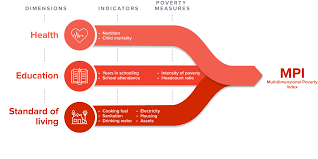
- A person is multidimensionally poor if she/he is deprived in one third or more (means 33% or more) of the weighted indicators (out of the ten indicators). Those who are deprived in one half or more of the weighted indicators are considered living in extreme multidimensional poverty.
UPSC Civil Services Examination Previous Year Question (PYQ)
Prelims
Q. The Multi-dimensional Poverty Index developed by Oxford Poverty and Human Development Initiative with UNDP support covers which of the following? (2012)
- Deprivation of education, health, assets and services at household level
- Purchasing power parity at national level
- Extent of budget deficit and GDP growth rate at national level
Select the correct answer using the codes given below:
(a) 1 only
(b) 2 and 3 only
(c) 1 and 3 only
(d) 1, 2 and 3
Ans: (a)
Mains
Q. Despite Consistent experience of high growth, India still goes with the lowest indicators of human development. Examine the issues that make balanced and inclusive development elusive. (2016)


Agriculture
PepsiCo Patents Revocation for Potato Variety
For Prelims: Protection of Plant Varieties and Farmers’ Rights Authority, FL 2027 Potato Variety
For Mains: Role and functions of the PPVFRA, Regulations governing intellectual property protection
Why in News?
The Delhi High Court recently upheld the decision made by made by Protection of Plant Varieties and Farmers’ Rights Authority (PPVFRA) regarding the revocation of PepsiCo India's intellectual property protection for a potato variety (FL 2027).
What is the FL 2027 Potato Variety Case About?
- About FL 2027 Variety:
- FL 2027 is a potato variety developed by Robert W Hoopes at Frito-Lay Agricultural Research. It is specifically bred for chip production by PepsiCo's Lay's brand.
- FL 2027 is an ideal potato variety for chip manufacturing due to its high dry matter, low sugar content, and lower moisture content.
- These qualities minimize dehydration and energy costs during processing while reducing the risk of blackening when fried.
- Case:
- PepsiCo India Holdings was granted a certificate of registration for FL 2027 as an "extant variety" on February 1, 2016 by PPVFRA.
- It implied that during the validity period, nobody else could commercially produce, sell, market, distribute, import or export it without the breeder’s authorization.
- This period was 6 years from the date of registration and extendable up to 15 years.
- However, PepsiCo in its 2012 application had sought the registration of FL 2027 as a “new variety” which due to failing to meet certain criteria was rejected.
- PepsiCo India Holdings was granted a certificate of registration for FL 2027 as an "extant variety" on February 1, 2016 by PPVFRA.
Note:
- Criteria for a “new variety” of Plant:
- A “new variety” has to conform to the criterion of novelty - the propagated or harvested material from it should not have been sold in India earlier than one year before the date of filing the application for registration.
- FL 2027 variety could satisfy only the criteria of distinctiveness, uniformity and stability, but not novelty.
- Reasons for the Registration Revocation:
- PepsiCo had also provided an incorrect first date of commercialization of the variety (17 Dec 2009), when it was already commercialized in 2002 in Chile.
- Hence, PPVFRA revoked the protection in December 2021 and rejected PepsiCo's application for renewal in February 2022. It also made it clear that India's rules do not allow a patent on seed varieties.
- PepsiCo challenged PPVFRA's decision in the Delhi HC.
- Ruling by the Delhi HC:
- The Delhi HC upheld the revocation of intellectual property protection faulting PepsiCo's application, stating that the company wrongly applied for registration of FL 2027 as a "new variety" and provided incorrect information regarding its first commercialisation date.
What is PPVFRA?
- The PPVFRA is an organization responsible for safeguarding the rights of plant breeders and farmers in India.
- It is an authority established under the Protection of Plant Varieties and Farmers' Rights (PPVFR) Act, 2001.
- The PPVFRA plays a crucial role in granting intellectual property protection to plant varieties and ensuring the rights of breeders and farmers are upheld.
- It reviews applications for plant variety registration, conducts examinations, and grants certificates of registration to eligible applicants.
- The authority also has the power to revoke or cancel the registration of plant varieties if deemed necessary.
What Other Foreign Companies in India have been Involved in Patent Infringement Issue?
- Monsanto vs. Nuziveedu Seeds: This case involved a patent infringement suit by Monsanto against Nuziveedu Seeds, an Indian seed company, for using its patented Bt cotton technology without paying royalties.
- The Delhi HC granted an interim injunction in favour of Monsanto in 2016, directing Nuziveedu Seeds to pay royalties based on the percentage of the net selling price of its seeds.
- The parties later settled the dispute through arbitration in 2017.
- Novartis vs. Union of India: This case involved a patent application by Novartis for its anti-cancer drug Glivec, which was rejected by the Indian Patent Office and the Intellectual Property Appellate Board on the grounds that it was not a new invention, but only a modified form of an existing compound.
- The Supreme Court of India upheld the rejection in 2013, ruling that the drug did not satisfy the criteria of novelty.
- Ericsson vs. Micromax: This case involved a patent infringement suit by Ericsson against Micromax, an Indian mobile phone manufacturer, for using its standard essential patents (SEPs) related to 2G, 3G and 4G technologies without obtaining a license.
- The Delhi HC granted an interim injunction in favour of Ericsson in 2013, directing Micromax to pay royalties based on the percentage of the net selling price of its devices.
- The parties later settled the dispute through mediation in 2014.

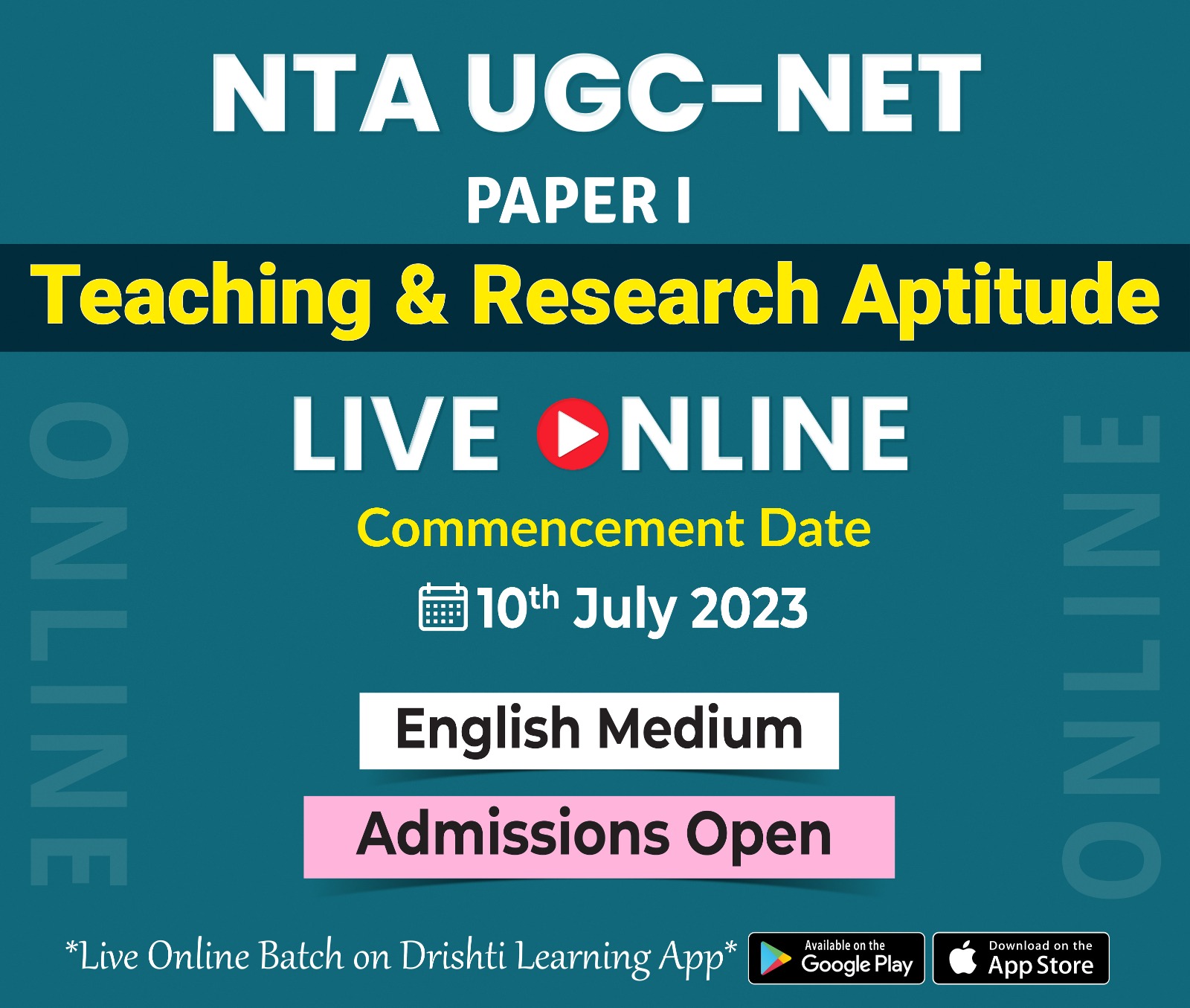
Biodiversity & Environment
Decline in Global Tropical Primary Forests: Global Forest Watch
For Prelims: Deforestation, Food and Agricultural Organization, Carbon sequestration, COP26 Glasgow 2021, The Bonn Challenge, Ministry of Environment, Forest & Climate Change, India State of Forest Report 2021, Forest Conservation Act, 1980, National Afforestation Programme, Environment Protection Act of 1986, Scheduled Tribes and Other Traditional Forest Dwellers (Recognition of Forest Rights) Act, 2006
For Mains: Significance of Forests, Status of Forests in India.
Why in News?
The latest report from World Resources Institute's (WRI) Global Forest Watch has revealed a staggering loss of tropical primary forests in 2022, amounting to 4.1 million hectares. This loss is equivalent to losing an area of 11 football fields per minute.
- The report emphasizes the significance of primary forests in the tropics, where over 96% of deforestation occurs, urging global attention to the issue.
- WRI is a global nonprofit organization that works with leaders in government, business and civil society to research, design, and carry out practical solutions that simultaneously improve people’s lives and ensure nature can thrive.
What are Primary Forests?
- Primary forests are characterized by their dense coverage of native tree species, minimal human interference, and undisturbed ecological processes.
- According to the Food and Agricultural Organization (FAO), primary forests account for approximately one-third (34%) of the world's forested land.
- They store more carbon and support greater biodiversity compared to other forest types. Therefore, their loss is nearly irreversible, as secondary forests cannot match their biodiversity and carbon sequestration capabilities.
What are the Major Findings of the Report?
- Forest-Related Commitments and Progress:
- The current rate of forest loss indicates a failure to restore forests adequately. The world is not on track to meet forest-related commitments, including the goal to end and reverse deforestation by 2030 (COP26 Glasgow 2021).
- Restoring 350 million hectares (Mha) of lost and degraded forests by 2030 is another key global pledge (The Bonn Challenge).
- To meet this target, global deforestation must be reduced by at least 10% annually. Also, tree cover must increase by 22 Mha per year between 2021 and 2030.
- The current rate of forest loss indicates a failure to restore forests adequately. The world is not on track to meet forest-related commitments, including the goal to end and reverse deforestation by 2030 (COP26 Glasgow 2021).
- Tree Cover Loss: The total global tree cover loss in 2022 declined by 10%. This includes primary, secondary, and planted forests. This decrease, according to Global Forest Watch, is a direct result of a decrease in fire-related forest losses which decreased 28% from 2021.
- However, non-fire losses in 2022 increased by slightly less than 1%.
- Forest Loss in India:
- India experienced the loss of 43.9 thousand hectares of humid primary forest between 2021 and 2022.
- This accounted for 17% of the country's total tree cover loss during the period, which amounted to 255 thousand hectares.
Note:
- The Ministry of Environment, Forest & Climate Change defines ‘forest cover’ in India as “all lands, more than one hectare in area with a tree canopy density of more than 10%”, and ‘tree cover’ as “tree patches outside recorded forest areas exclusive of forest cover and less than the minimum mappable area of one hectare”.
What is the Status of Forests in India?
- About:
- According to the India State of Forest Report 2021, the total forest and tree cover in India is 24.62% of the geographical area of the country. The total forest cover is 21.71% and the total tree cover is 2.91%.
- Area-wise Madhya Pradesh has the largest forest cover in the country followed by Arunachal Pradesh, Chhattisgarh, Odisha and Maharashtra.
- In terms of forest cover as percentage of total geographical area, the top five States are Mizoram (84.53%), Arunachal Pradesh (79.33%), Meghalaya (76.00%), Manipur (74.34%) and Nagaland (73.90%).
- According to the India State of Forest Report 2021, the total forest and tree cover in India is 24.62% of the geographical area of the country. The total forest cover is 21.71% and the total tree cover is 2.91%.
- Government Initiatives for Forest Conservation:
UPSC Civil Services Examination, Previous Year Question (PYQ)
Prelims
Q1. At the national level, which ministry is the nodal agency to ensure effective implementation of the Scheduled Tribes and Other Traditional Forest Dwellers (Recognition of Forest Rights) Act, 2006? (2021)
(a) Ministry of Environment, Forest and Climate Change
(b) Ministry of Panchayati Raj
(c) Ministry of Rural Development
(d) Ministry of Tribal Affairs
Ans-(d)
Q2. A particular State in India has the following characteristics: (2012)
- It is located on the same latitude which passes through northern Rajasthan.
- It has over 80% of its area under forest cover.
- Over 12% of forest cover constitutes Protected Area Network in this State.
Which one among the following States has all the above characteristics?
(a) Arunachal Pradesh
(b) Assam
(c) Himachal Pradesh
(d) Uttarakhand
Ans: (a)
Mains
Q. “The most significant achievement of modern law in India is the constitutionalization of environmental problems by the Supreme Court.” Discuss this statement with the help of relevant case laws. (2022)

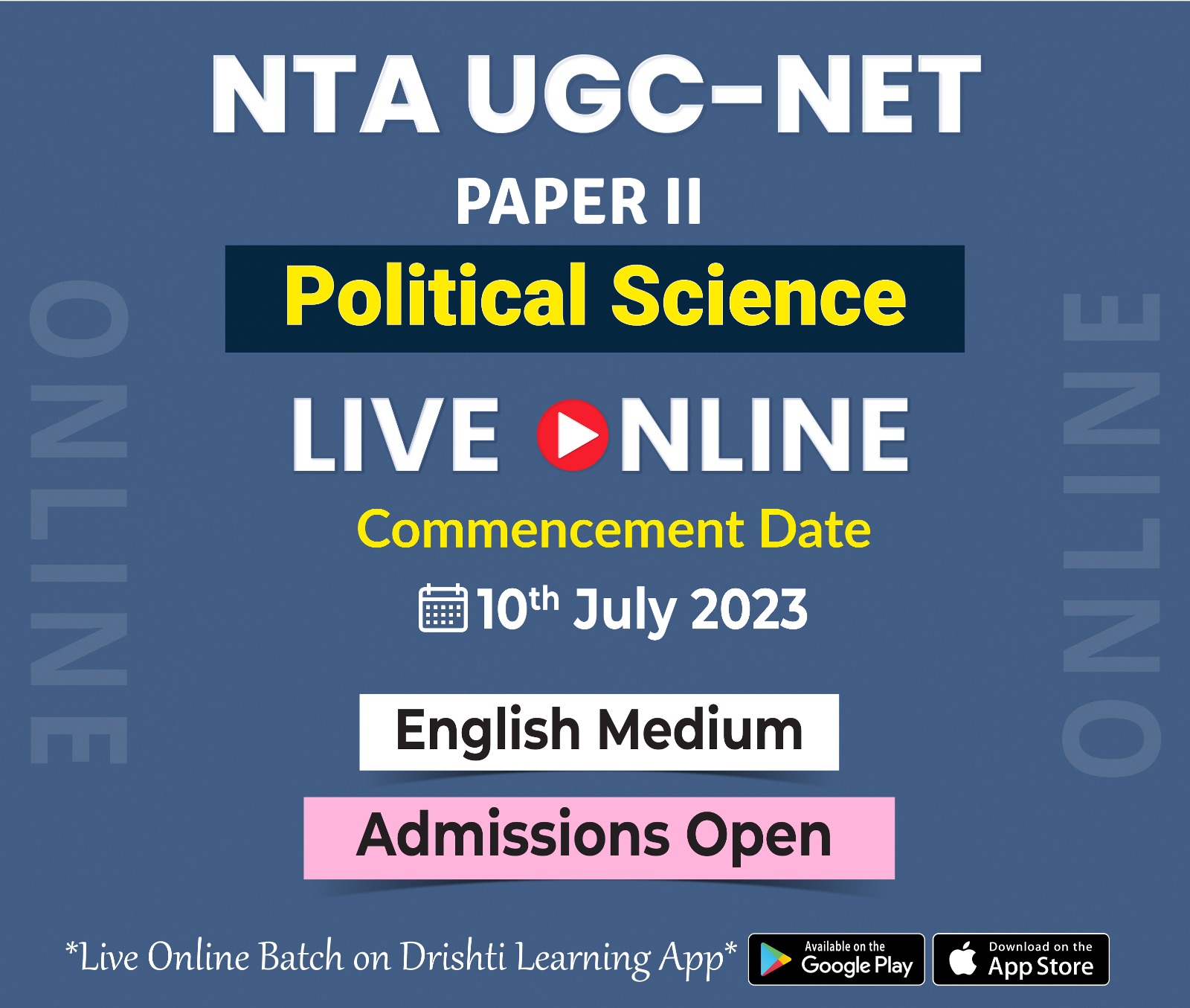
Science & Technology
Majorana Zero Modes
For Prelims: Majorana Zero Modes, Quantum Computing, Qubits, Supercomputer, Antiparticle, Fermions, Positrons, Neutrinos.
For Mains: Majorana Zero Modes and its potential advantages in Quantum Computing.
Why in News?
Recently, Microsoft researchers announced a significant breakthrough in the creation of Majorana Zero Modes, a type of particle with potential implications for revolutionizing quantum computing.
- Microsoft researchers engineered a topological superconductor composed of an aluminium Superconductor and an indium arsenide Semiconductor.
- Their device passed a stringent protocol, including measurements and simulations, indicating a high probability of hosting Majorana zero modes.
- The topological gap protocol and observation of the conductance peak are considered strong evidence for Majorana zero modes.
What are Majorana Zero Modes?
- Majorana Fermions:
- All subatomic particles that make up matter are called fermions.
- In 1928, physicist Paul Dirac developed the Dirac equation to understand how quantum mechanics and the special theory of relativity could coexist.
- The Dirac equation described the behaviour of subatomic particles that moved at near the speed of light.
- This equation predicted the existence of antiparticles for each particle, leading to the discovery of the first antiparticle, the positron (or the anti-electron) in 1932.
- In 1937, physicist Ettore Majorana found that the Dirac equation allowed for particles that satisfied certain conditions to be their own antiparticles to be their own antiparticles.
- In his honour, fermions that are their own antiparticles are called Majorana fermions.
- Neutrinos are one type of particle that physicists believe could be Majorana fermions, although experimental proof is still lacking.
- Majorana Zero Modes:
- Fermions possess four quantum numbers, with one of them being quantum spin, which only has half-integer values.
- Bound states of fermions that are their own antiparticles are called Majorana zero modes.
- Majorana zero modes have been a subject of research for over two decades.
- Their unique characteristics make them promising for topological quantum computing.
What can be the Potential Advantages of Majorana Zero Modes in Computing?
- Majorana zero modes possess unique properties that make Quantum Computers more robust and computationally superior. Quantum computers currently use individual electrons as qubits, but they are fragile and susceptible to decoherence.
- Majorana zero modes, composed of an electron and a hole, can be used as more stable qubits.
- Even if one of the entities is disturbed, the overall qubit does not decohere, protecting the encoded information.
- Majorana zero modes offer topological degeneracy, allowing for the storage and retrieval of information from different topological properties, without easily losing the encoded information.
- Topology is the study of those properties of matter that don’t change when it undergoes continuous deformation – i.e., when it’s stretched, folded, twisted, etc., but not ruptured or glued to itself.
What is Quantum Computing?
- Quantum computing uses phenomena in quantum physics to create new ways of computing.
- Quantum physics explains the behavior of energy and material on the atomic and subatomic levels.
- Quantum computing involves qubits. Unlike a normal computer bit, which can be either 0 or 1, a qubit can exist in a multidimensional state.
- The power of quantum computers grows exponentially with more qubits.
- Classical computers that add more bits can increase power only linearly.
- Quantum computing has the capability to sift through huge numbers of possibilities and extract potential solutions to complex problems and challenges.
- The basic properties of quantum computing are superposition, entanglement, and interference.
- Superposition:
- It is the ability of a quantum system to be in multiple states simultaneously.
- The example of superposition is the flip of a coin, which consistently lands as heads or tails—a very binary concept. However, when that coin is in mid-air, it is both heads and tails and until it lands, heads and tails simultaneously. Before measurement, the electron exists in quantum superposition.
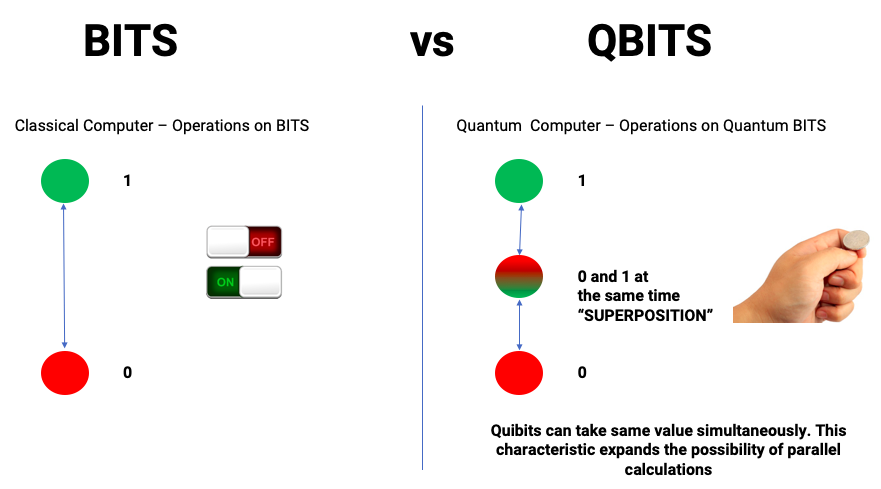
- Entanglement:
- It means the two members of a pair (Qubits) exist in a single quantum state. Changing the state of one of the qubits will instantaneously change the state of the other one in a predictable way. This happens even if they are separated by very long distances.
- Einstein called spooky ‘action at a distance’.
- Interference:
- Quantum interference states that elementary particles(Qubits) can not only be in more than one place at any given time (through superposition), but that an individual particle, such as a photon (light particles) can cross its own trajectory and interfere with the direction of its path.
- Superposition:
UPSC Civil Services Examination Previous Year Question (PYQ)
Prelims
Q. Which one of the following is the context in which the term "qubit" is mentioned?
(a) Cloud Services
(b) Quantum Computing
(c) Visible Light Communication Technologies
(d) Wireless Communication Technologies
Ans: (b)
Exp:
- Quantum Supremacy
- Quantum computers compute in ‘qubits’ (or quantum bits). They exploit the properties of quantum mechanics, the science that governs how matter behaves on the atomic scale.
Hence, option (b) is correct.

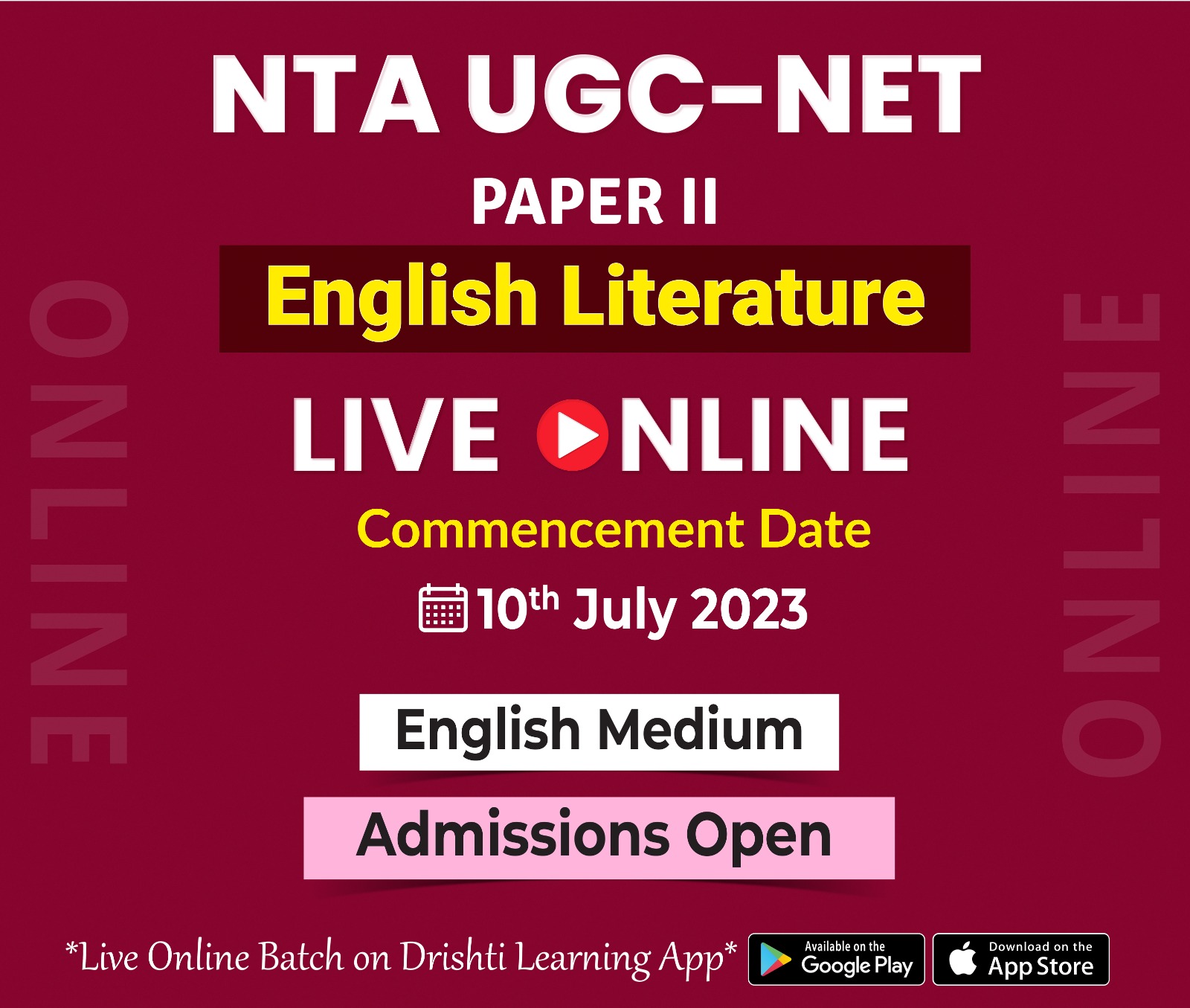
Science & Technology
Concerns Related to High Modernism in AI
For Prelims: Concerns Related to High Modernism in AIs, ChatGPT, Artificial Intelligence
For Mains: Concerns Related to High Modernism in AIs, Ethical, social, and cultural implications of AI technology.
Why in News?
The emergence of Giant Artificial Intelligences (gAIs) like ChatGPT has garnered significant attention in recent times. However, there are concerns related to High Modernism in designing these AIs.
What is ChatGPT?
- ChatGPT is a variant of GPT (Generative Pre-trained Transformer) which is a large-scale neural network-based language model developed by OpenAI.
- GPT models are trained on vast amounts of text data to generate human-like text.
- It can generate responses to a wide range of topics, such as answering questions, providing explanations, and engaging in conversations.
- In addition to being able to "admit its mistakes, challenge false premises, and refuse unsuitable requests," ChatGPT can also "answer follow-up questions."
- The chatbot was also trained using Reinforcement Learning from Human Feedback (RLHF).
How High Modernism Poses Challenges in Designing AI?
- About High Modernism:
- High modernism refers to a top-down ideology driven by a faith in order and measurable progress. It is characterized by an unfaltering confidence in science and technology as means to reorder the social and natural world.
- It often disregards local knowledge and lived experiences, leading to unintended consequences.
- This approach, when applied to AI design, can overlook the complexity and diversity of human thought, resulting in biased and incomplete systems.
- High modernism refers to a top-down ideology driven by a faith in order and measurable progress. It is characterized by an unfaltering confidence in science and technology as means to reorder the social and natural world.
- Challenges of High Modernism in AI Design:
- Loss of Diversity: gAIs are trained predominantly on internet text, which is biased towards certain languages, religions, races, and cultures, risk perpetuating these biases.
- The lack of diverse training data can lead to language loss and hinder the richness of human thought and expression.
- Reduction of Local Knowledge: By abstracting away the nuanced knowledge acquired through direct experience, gAIs prioritize the "atlas view" of information available on the internet.
- This approach neglects local context and the territory-specific insights necessary for accurate and multi-dimensional understanding.
- Loss of Diversity: gAIs are trained predominantly on internet text, which is biased towards certain languages, religions, races, and cultures, risk perpetuating these biases.
What is the Role of Diversity in Designing AIs?
- Avoiding Standardization:
- Lack of diverse AI models may result in standardized, one-size-fits-all solutions that fail to account for regional, cultural, or individual variations.
- Promoting diversity in AI development can yield multiple perspectives, encouraging innovation and tailored solutions.
- Improved Understanding:
- Diversity in AI models helps capture a broader range of perspectives and knowledge, reducing biases and enhancing the models' understanding and response capabilities.
- It allows for the inclusion of diverse languages, cultures, and experiences, fostering a more inclusive and equitable AI landscape.
What are the Ways to Thwart the Risks Posed by gAIs?
- Slow Down AI Commercialization:
- Slowing the pace of AI commercialization allows for democratic inputs and comprehensive discussions about the Ethical, social, and cultural implications of AI technology.
- This approach ensures that decisions about AI development are not solely driven by profit motives but also consider broader societal interests.
- Promote Diverse AI Models:
- Encouraging the development of diverse AI models, each with its own incentives and perspectives, fosters a more robust and inclusive AI ecosystem.
- Multiple models with different focuses and languages can collectively contribute to a more comprehensive understanding of the world.
Conclusion
- While gAIs like ChatGPT offer remarkable capabilities, their design must consider the risks associated with high modernism.
- Prioritizing diversity in AI development, fostering democratic inputs, and valuing local knowledge can help mitigate these risks and ensure that AI technologies serve the diverse needs of humanity.
- Striking a balance between augmentation and preserving the richness of human thought is crucial for the responsible development and deployment of AI systems.


Rapid Fire
Rapid Fire Current Affairs
SAMARTH: Empowering Textile Sector through Skill Development
In a recent meeting, the Empowered Committee for the Scheme for Capacity Building in Textiles Sector (SAMARTH) announced significant developments to enhance skill development in the textiles industry. With 43 new implementing partners and an additional target of training 75,000 beneficiaries, SAMARTH aims to impart essential skills to the workforce. The Funding pattern has also been revised with an increment of 5% in cost norms which will give much needed additional financial support to industries imparting skill under this Scheme. SAMARTH covers 28 states and 6 Union territories, benefiting various sections of society, including SC, ST, and marginalized categories, with a focus on women.
SAMARTH is a demand-driven and placement-oriented umbrella skilling programme of the Ministry of Textiles formulated under the broad skilling policy framework adopted by M/o Skill Development & Entrepreneurship.
Read more: SAMARTH Scheme
Science of Crying: Tears Drain into the Nose
In the process of crying, tear fluid is produced by the lacrimal gland, causing the conjunctiva (the membrane covering the white of the eye and inner eyelids) to bulge. These tears then traverse a network of ducts in the conjunctival sac. Eventually, they reach the lacrimal sac and are channeled into the nasal cavity through the lacrimal duct, which connects the eyes to the nose. This drainage process can sometimes cause a feeling of congestion or a blocked nose. However, there is a flap valve at the end of the lacrimal duct that prevents the tears from flowing back into the eyes.
34th International Biology Olympiad
India topped the medals tally at the 34th International Biology Olympiad (IBO) 2023 held in Al Ain, UAE from 3 July to 11 July 2023. There were 293 students from 76 countries in this year's IBO.
This is the first time that India has turned in an all-gold performance at IBO. It is also the first time that India has topped the medals tally at the Olympiad
Ker Puja
Ker Puja is religious festival that celebrated in the state of Tripura. The guardian God, called Ker, is worshipped at this time. It is held few days after the Kharchi Puja.
The celebration is primarily centered in Agartala. On the day of the festival, the city’s entrance is locked and people from outlying areas are restricted from entering the area.
Read more: Kharchi Puja



